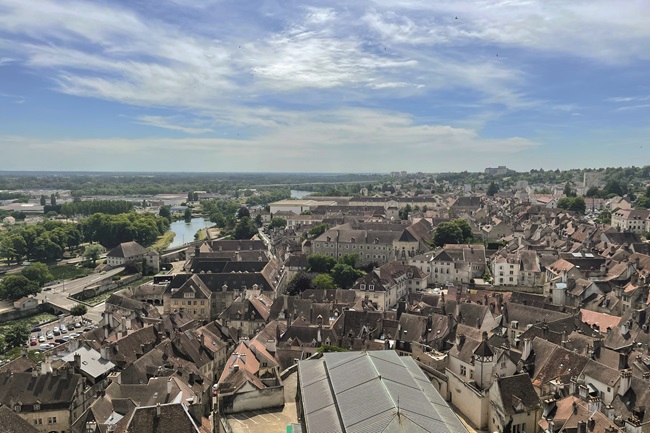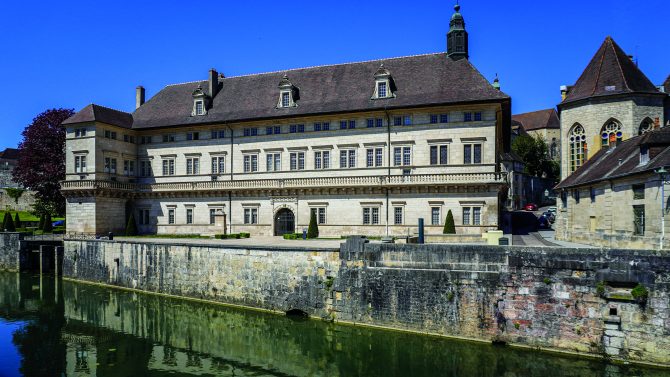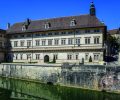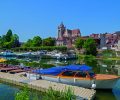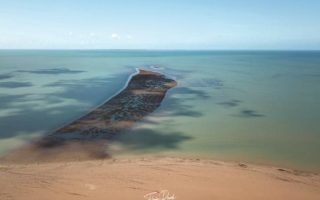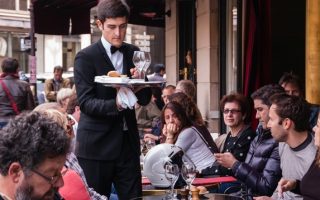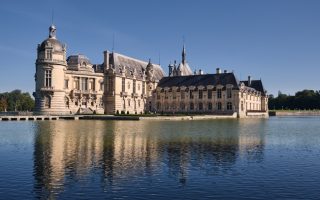French City Break: Dole
A town that looks east and west, and down at the Doubs, Dole is so much more than being Louis Pasteur’s birthplace.
There are many pussy cats in Dole. They loiter on pavements, their tales curled towards the curious tourist who chooses to walk the city streets. Along Rue de la Sous-Préfecture, a man walks through the external wall of a building, one shoe on the pavement, the other leg raised before touching the ground. His face, smart-collared neck, and hands are revealed; the rest of his body is yet to penetrate the stonework. Meanwhile, the head of a green horse appears from the attic window of a tall townhouse. Things are not what they seem in the city of Dole.
Marcel Aymé, French author and playwright whose 20th-century works, such as La jument verte (The Green Mare), Le passe-muraille (The Man Who Walked Through Walls) and Les Contes du chat perché (Tales from the Perched Cat), have become French classics for children and adults alike, is Dole’s significant other. He spent his formative years in the town. A couple of quiet streets away from Aymé’s childhood home is Dole’s most notable former resident, Louis Pasteur. The chemist and microbiologist was born a little over 200 years ago in an unpretentious tanner’s house overlooking one of Dole’s waterways, of which there are several. A sign in the town describes Pasteur as an ‘ambassador’ for Dole. Frankly, a scientist who developed vaccines against anthrax and rabies, originated the process of pasteurisation and in so doing has saved millions of lives globally not to mention saving the beer, wine and silk industries in France through his work on microorganisms – deserves more recognition than ‘town ambassador’. He is a global megastar in the world of science and, it would seem from a visit to the humble little birthplace museum, he knew it. More on that later.
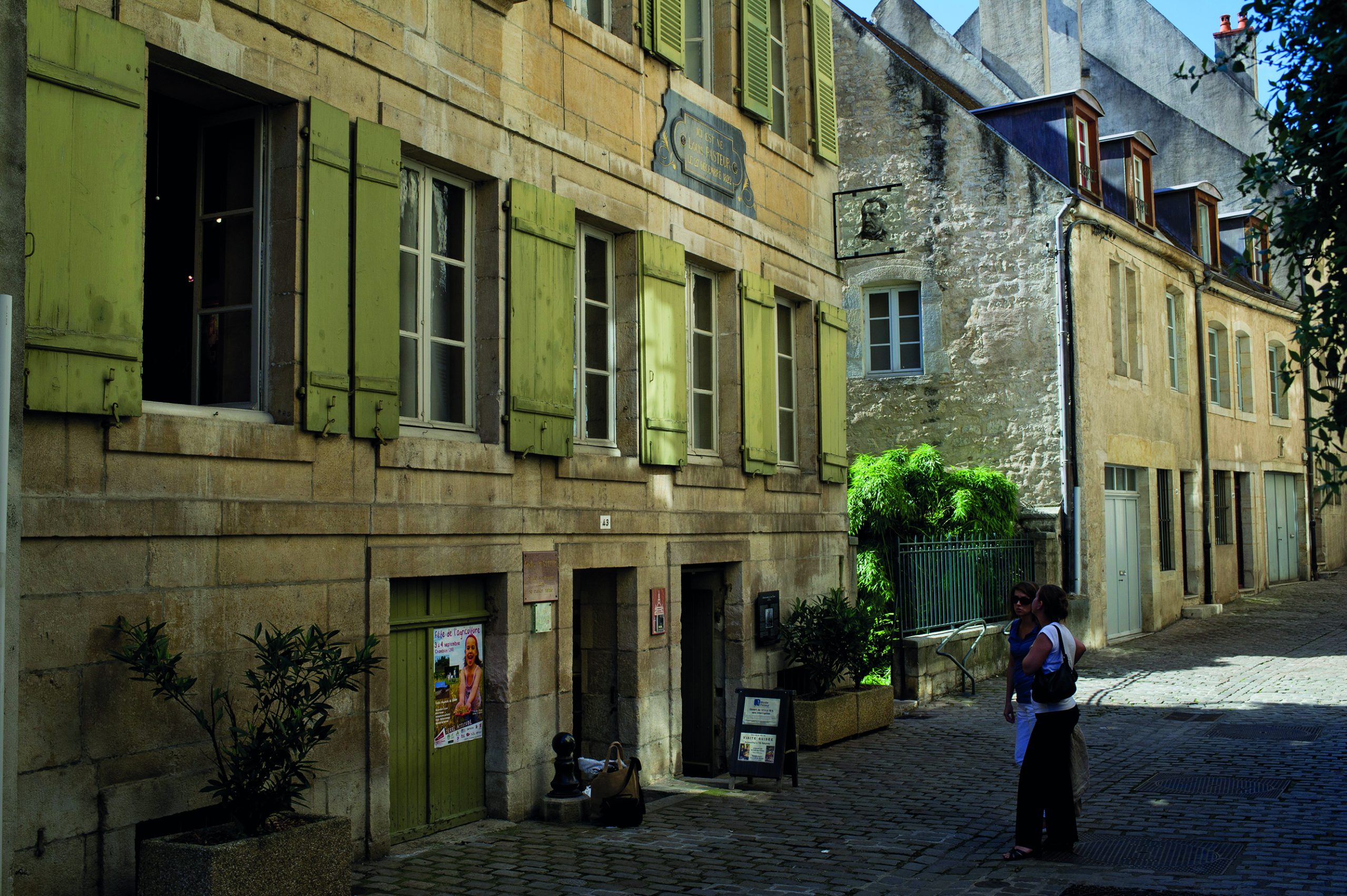
Louis Pasteur’s birthplace © Laurent CHEVIET BFC Tourisme
A desirable town
A border town located on the edge of two historic regions, Dole sits amid the rolling, pastoral landscape of Franche-Comté (in the Jura department) yet its remarkable centre offers the architectural influence of Burgundy – the department of Côte d’Or is only 7km away. The town developed on a small limestone hilltop, as a fortress built in the 12th century by the Holy Roman Emperor Barbarossa to keep watch over the comings and goings along the River Doubs below. Dole became the capital of Franche-Comté under Burgundian rule and latterly under Habsburg rule. But the town was in the perpetual eye of the French crown, and Louis XI managed to destroy Dole in 1479.
A golden age of construction in the 16th century symbolised a renaissance of the Comté capital against the French. Following another unsuccessful French siege, commanded by Henri II de Bourbon-Condé in 1636, the town finally succumbed to the crown under the direction of Louis XIV in a ten-year tussle ending in 1678, when Franche-Comté became part of France. Dole lost its capital status to nearby Besançon which, to this day, remains the provincial seat. Despite Dole’s loss of political prestige, its 16th-century renaissance is what visitors enjoy today. Some 116 hectares of the town’s streets and parks are protected by conservation law.
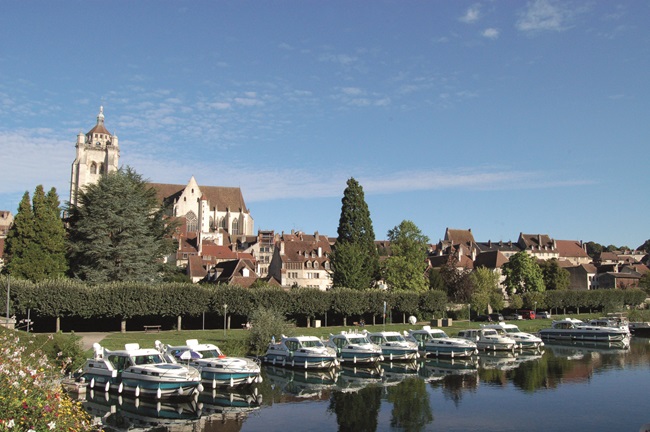
Dole from its port on the Doubs © Sandrine Baverel / BFC Tourisme
Follow the cat
This Ville d’art et d’histoire is relatively small, with a population of fewer than 24,000 residents. One of the best ways to explore the conservation area is on foot by following the pussy cats. Bronze arrows in the pavements along a 4km circular route, inscribed by Ayme’s Chat perché, direct visitors through Dole’s streets. A trail map can be collected from the tourist office on Place Jules Grévy, offering detail about places to see along the way. Other cats attached to walls, with bar codes stamped on their bottoms, allow smart phones to pick up an historical impression of the city.
I begin beneath the statue dedicated to Louis Pasteur in the picturesque park of Cours Saint-Mauris, to the east of Place Jules Grévy. The 18th-century park, developed on the fortress ramparts and laid out as an English garden, is labelled a Jardin remarquable. It’s a pleasant place for a stroll, and concerts and events take place here throughout summer.
Pasteur, in bronze, looks on pensively. More poignant are the figures at the foot of his plinth: a mother with a wistful expression nurses two sick children on her knees and a second female points towards Pasteur. A simple inscription – L’humanité reconnaisante (grateful humanity) – modestly expands on his ambassadorial role for the town. Following the bronze cats into the heart of Dole, I saunter along the main thoroughfare that passes east to west, the Rue de Besançon, which was the Roman road from Chalon-sur-Saône to Besançon. Smart mansions and tall townhouses are built from creamy limestone blocks beneath red-tiled roofs, each one modelling pale grey or off-white shutters.
View this post on Instagram
As I stroll, I note that the architecture is pretty without being pretentious. There are pleasant flower-adorned squares with oversized seats to ponder awhile over artworks, such as the Place aux Fleurs where a large bronze sculpture, Les Commères (The Gossips) by Jens Boettcher, resides.
Along Rue du Collège de l’Arc I spy the fancy porch of a Jesuit college. I peer into courtyards to appreciate extraordinary stone staircases, and I learn a new word – treige – that comes from Franche-Comté dialect and means a narrow, uncovered alleyway. There are many of them.
I step away from the trail temporarily to visit the city hall, only to discover the Jardin des Carmélites opposite. It’s springtime and the small courtyard that was once frequented by meditating nuns, is bursting with white cherry blossom, framing the tower of Dole’s collegiate church in the distance.
Back on the trail, I step into the Musée des Beaux-Arts housed in a former military mess for cavalry officers that’s beside a part of the fortified town walls from the 16th century. The museum is free to visit, with exhibitions over three floors.
Mixed-media artworks from the last couple of decades mingle among 18th-century still-life and landscapes. There’s a host of religious paintings, too, including an extraordinary oil on patterned marble from the 16th century attributed to the Italian School. But the artwork that stands out for me, given its correlation, is a large oil painting from 1637, Le Siège de Dole en 1636, which offers a fine view of the town with its fortress walls, the Roman road and the Doubs river.
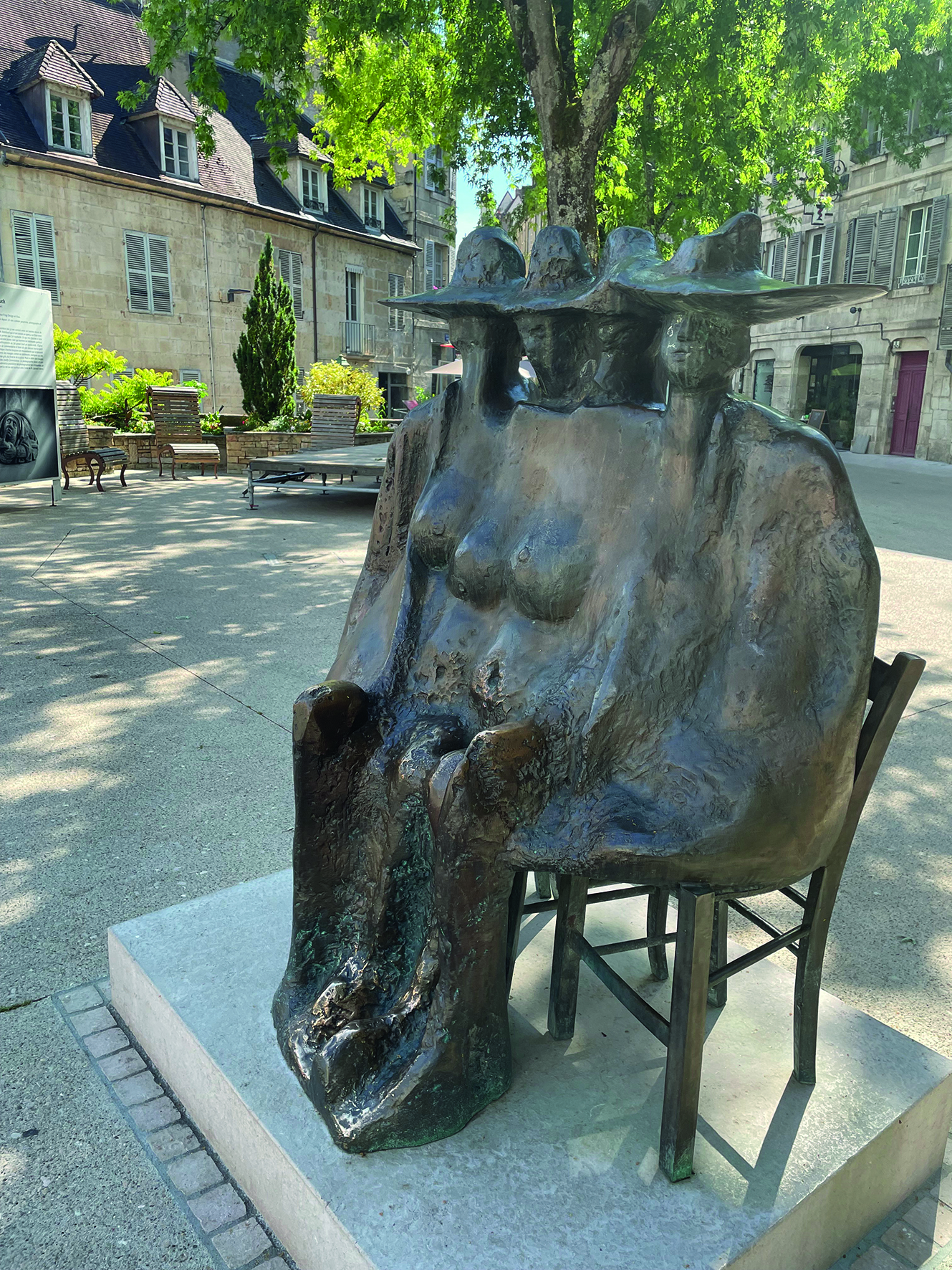
Les Commères statue © MANON LEGROS / BFC TOURISME
Riverside ramble
It’s towards the river, on a slightly winding route, that I head next. Passing ever larger and grander buildings, like the Hôtel-Dieu (a hospital for the poor that now houses the town’s archives – it’s worth putting your head inside the door to see the courtyard), and the former convent of the Dames d’Ounans which is now a secondary school, I arrive at the Doubs.
Its offshoots, the Canal du Rhône au Rhin and the quieter backwater, the Canal des Tanneurs, offer, in my humble opinion, the most scenic views of the historic old town rising from the water’s edge. Head to the Jardin des Chevannes, on an island formed by the two canals, for the prettiest aspect, looking over the backs of old houses that were once filled with the sights and smells of the tanning industry. It was here that Louis Pasteur’s father ran his tanning business beneath his waterside home and here that the famous scientist was born and grew up until the family moved to the scenic village of Arbois, 35km southeast.
There’s a small exhibition in Pasteur’s birthplace, displaying family possessions and an introduction to his work. Of the family trinkets, one notably stands out: a pair of soup bowls that Pasteur commissioned for his granddaughter. On each, a porcelain child reads a book about ‘great men’; the book is open… at the page about Pasteur!
DOLE ESSENTIALS
GETTING THERE
BY PLANE
Lyon Saint-Exupéry (190km) or Geneva (220km) with a train via Lausanne.
BY CAR
Motorways A36, exit 2; A39, exit 6.
BY TRAIN
SNCF-TGV Paris-Dole 2hrs 15m, Lyon- Dole 3hrs (via Dijon).
WHERE TO STAY
Au Moulin des Ecorces offers 3-star accommodation in a beautifully renovated old mill overlooking the River Doubs close to the centre. For standard fare, the Ibis Dole Sud Choisey offers clean and functional but ordinary rooms, meanwhile a 4-star option is the Château Mont Joly, 5km from Dole town centre. Or, for something completely different, stay in a treehouse on the edge of the Chaux forest at Cabanes du Bois Clair. Camping du Pasquier is a five-minute walk from the town centre.
TOURIST INFORMATION
From France Today Magazine
Lead photo credit : Dole from the tower of the Collègiale Notre Dame © Manon_LEGROS__BFC_Tourisme
Share to: Facebook Twitter LinkedIn Email
More in Burgundy, city break, city break in France, French city, weekend break
Leave a reply
Your email address will not be published. Required fields are marked *

